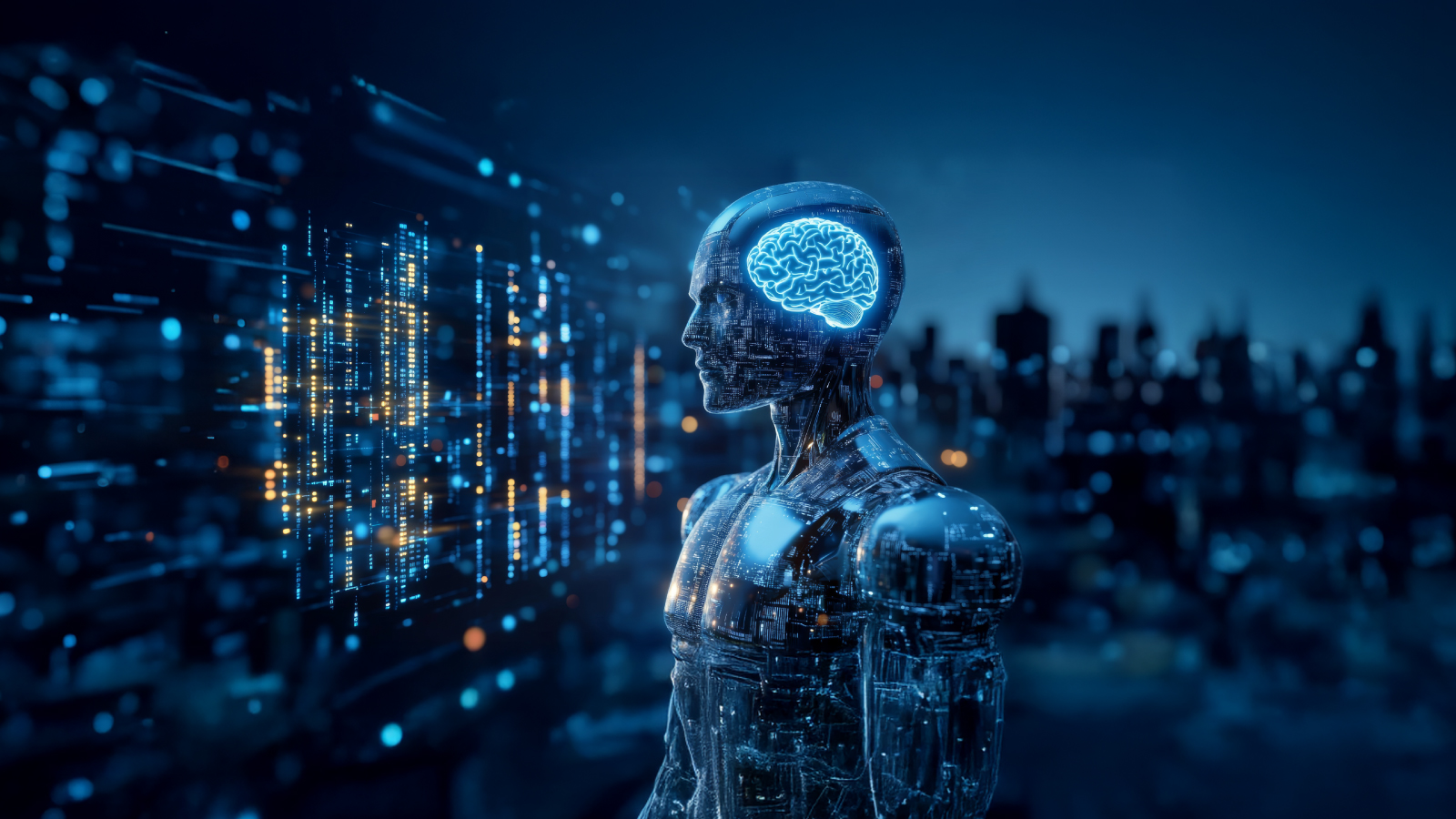What is Machine Learning? Why It’s Critical for Business Success
Machine Learning (ML) is increasingly being adopted by organizations to enhance their competitiveness. It is used to improve the accuracy of data analysis and support smarter business decisions.
This article aims to provide a comprehensive understanding of Machine Learning capabilities in the format of “Machine Learning 101,” covering its definition, types, importance, examples, and guidelines on how organizations can start leveraging Machine Learning.
What is Machine Learning (ML) ?
Simply put, Machine Learning is a process that enables computers to learn and improve from data and their environment independently, without needing human intervention or additional programming. ML is a subset of Artificial Intelligence (AI), acting as the “brain” of AI systems, capable of learning autonomously from various data sources.
The Difference Between AI, Machine Learning, and Deep Learning
| AI | Machine Learning | Deep Learning | |
| Appropriate Data Volume | Large datasets with significant variability | Data Points originating from diverse sources and channels | Big Data |
| Outcomes | Predictions that assist in decision-making | Numerical outcomes, such as classification or scoring | Variety of formats, including numerical outcomes or unstructured formats like text or audio |
| Working Process | Programmed instructions to mimic human activities and generate human-like outputs | Uses algorithms capable of autonomous operations in various forms to learn and predict potential outcomes from data | Employs Neural Networks, or artificial neural systems, to process and compute data, interpret it, and identify relationships between data points |
Types of Machine Learning
- Supervised Learning (Learning with Guidance)
Supervised Learning trains Machine Learning (ML) models by using labeled data to teach algorithms to classify data or predict outcomes. The data inputted into Supervised Learning must include:
- Input: The dataset.
- Output: The corresponding answers or labels for the data.
Supervised Learning is divided into two main types:
- Regression: Predicts future trends in data based on two variables.
- Classification: Processes data to categorize it into specific groups.
- Unsupervised Learning (Learning without Guidance)
Unsupervised Learning uses ML algorithms to analyze and group datasets that have no pre-defined labels. These algorithms can uncover hidden patterns or cluster data independently, without human intervention. This learning method excels in identifying similarities and differences in data.
Unsupervised Learning is divided into two main types:
- Clustering: Groups related data points together.
- Dimensionality Reduction: Simplifies complex data or reduces data dimensions for easier analysis.
- Reinforcement Learning (Learning through Reinforcement)
Reinforcement Learning involves learning from an environment by choosing actions to maximize rewards. It improves decision-making over time through trial and error in simulated scenarios. The process involves setting certain conditions for the computer to achieve, where the computer receives feedback from humans to determine whether its actions are correct or effective.
- Semi-Supervised Learning (Learning with Partial Guidance)
Semi-Supervised Learning combines the strengths of Supervised and Unsupervised Learning. It leverages both labeled and unlabeled data to enhance the accuracy of predictions while reducing the cost of labeling large datasets.
Why is Machine Learning Important for Businesses ?
- Enhancing Decision-Making
Machine Learning (ML) can process and analyze massive amounts of data quickly and accurately, identifying previously unseen patterns in real-time. This allows organizations to utilize this data for rapid and well-informed business decisions that adapt to changing circumstances.
- Reducing Repetitive Tasks and Automating Routine Processes
ML algorithms can independently filter, classify, and group data without human intervention. This enables tasks like generating reports, scanning documents, transcribing speech into text, and organizing content to be automated. It reduces repetitive workloads and improves efficiency in routine operations.
- Creating Personalized Customer Experiences
ML can deliver tailored customer experiences through personalization. For example, in retail, ML analyzes past purchase histories or customer searches to recommend products in real-time, aligning closely with individual customer needs.
- Improving Fraud Detection and Security
ML algorithms can process large datasets in real-time to detect abnormalities, risks, or security vulnerabilities and identify fraudulent behaviors. This helps organizations mitigate cyber threats, prevent data breaches, and enhance the protection of critical information.
- Optimizing Resource Management
ML can accurately predict trends and behaviors, improving resource management efficiency. For instance, it forecasts product demand and adjusts inventory levels to minimize costs. Additionally, it can optimize internal resource allocation (Resource Allocation) to further streamline operations.
Examples of Machine Learning in Business
- Healthcare Business
Machine Learning (ML) helps analyze treatment strategies based on patient medical histories. It is also used to interpret medical images, such as X-rays, MRIs, and CT scans, to detect early-stage abnormalities like tumors. This enables faster and more efficient treatment processes.
- Financial Business
ML is used for fraud detection by analyzing behaviors and patterns in transactions to identify anomalies. Additionally, ML personalizes financial products to suit the needs of specific customer groups.
- Logistics and Transportation Business
ML helps recommend the most efficient routes that minimize time and fuel consumption. It also optimizes fleet management systems to improve overall operational efficiency.
- Retail Business
ML analyzes customer purchasing behaviors to refine product recommendations, aligning them with customer needs. It also increases sales opportunities through upselling and cross-selling strategies.
- Manufacturing Business
ML is applied to Predictive Maintenance, enabling proactive planning for machinery repairs. It is also used to optimize various aspects of supply chain management, improving overall efficiency.
- Media Business
ML assists in recommending content tailored to specific audience groups by analyzing their viewing history. It also performs Sentiment Analysis to understand audience reactions, providing insights for further marketing strategies.
- Energy Business
ML forecasts risks of machinery malfunctions, enabling preemptive maintenance planning. It also optimizes energy usage to maximize efficiency.
Creating Business Outcomes from ML
Utilizing Machine Learning (ML) to achieve business results goes beyond merely implementing technology. It requires strategic planning and prioritization to determine where ML can deliver the most value to the organization. Additionally, data readiness is essential for developing ML models that meet specific organizational needs.
Therefore, before deploying ML in practice, it is crucial to establish a comprehensive roadmap for integrating ML into the organization, including the following steps:
- Identifying Business Problems and Goals
- Assessing Data Readiness and Organizational Infrastructure
- Selecting Suitable ML Approaches and Techniques
- Developing and Continuously Testing ML Models to enhance their effectiveness and outcomes.
In the future, advancements in ML technology will unlock new business potential, fostering innovation and long-term growth. Organizations that adopt ML promptly will gain a competitive edge in a rapidly evolving market. Collaborating with external experts can be crucial for successful ML implementation.
For ML strategy consulting, Bluebik offers expert services in Big Data & Advanced Analytics, from strategy formulation to tailored implementation. Contact us at ✉ [email protected], ☎ 02-636-7011.
References: ibm, techtarget, acropolium, aws










